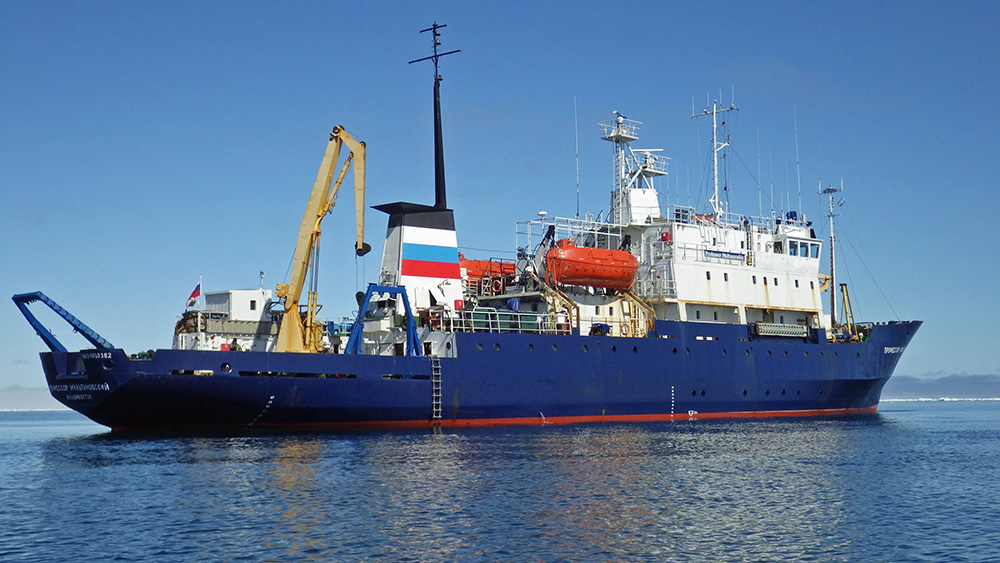Scientists aboard the “Professor Multanovskiy,” a 235-foot Russian icebreaker-cum-research vessel, have embarked on a cruise through the icy waters of the Bering Sea to gather information about Pacific walruses.
The cruise began on May 27, 2015 and will run through June 30 as part of a collaborative walrus research project being conducted by the U.S. Fish and Wildlife Service, U.S. Geological Survey and Alaska Department of Fish and Game. The scientific crew includes 10 biologists, a walrus hunter from St. Lawrence Island, and three Russian biologists. Also included are two interpreters, one from the U.S. and one from Russia, and 25 members of the ship’s crew.
The 2015 cruise marks the project’s third year, and cruise activities are focused on both U.S. and Russian waters of the Chukchi Sea. Working in Russian waters requires a Russian-flagged ship. The 2013 and 2014 cruises were restricted to the U.S. portion of the Chukchi Sea and used a U.S. ship. Aerial reconnaissance is used in both countries to locate and direct the ship to aggregations of walruses hauled out on sea ice.
The research cruise has three main objectives:
- Visually observe groups of walruses to determine the sex and age composition of all walruses in each group. Once several years of observations are obtained, the sex and age information will be used in a statistical model to estimate the sex and age structure of the overall population, which provides an understanding of the population’s demography.
- Collect a small skin biopsy from ~1,300 walruses per year of all age classes; i.e., calf, 1-year old, 2-year old, 3-year old, 4-5 year old, and adult females. Analyze the DNA of each biopsy to genetically identify (mark) each individual. Each year, determine how many individuals were biopsied again; i.e., recaptured. After several years of collecting biopsies, the number of recaptures is used to estimate population abundance and provide information about recruitment and age specific survival rates.
- Deploy satellite tags on adult female walruses to track their movements and find the areas where they spend the most time, because those are the areas likely to be most important. Because females use sea ice as a platform to rest between feeding trips to the sea floor, without having to travel to shore, reductions in sea ice due to climate change has the potential to reduce the ability of walruses to successfully raise calves.
Stay tuned for updates on this voyage sent from aboard the ship!



